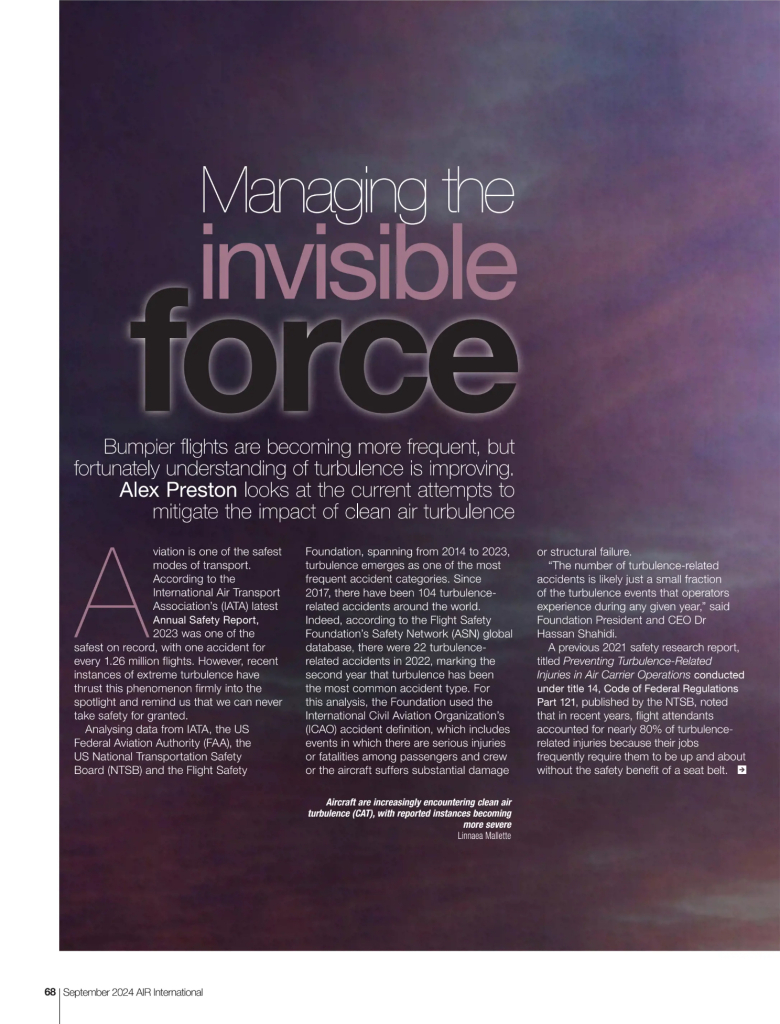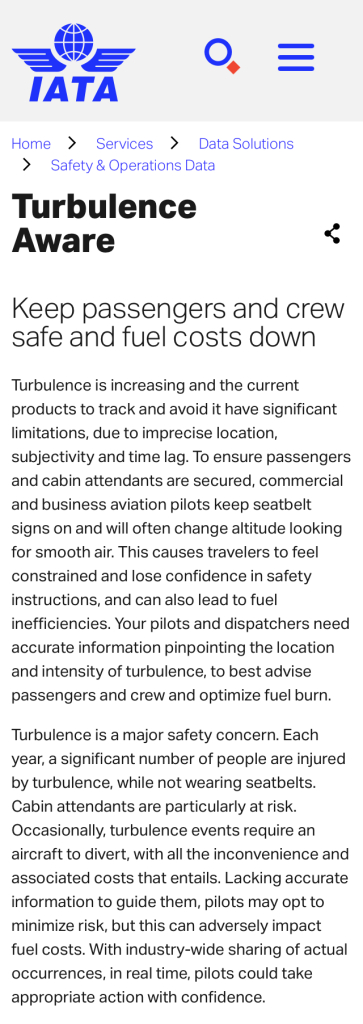et aussi
Sur la fréquence des turbulences sévères lire aussi
https://www.bbc.com/future/article/20240524-severe-turbulence-climate-change-singapore-airlines
extrait
According to a 2024 study, aircrafts encounter moderate to « severe-or-greater » turbulence 68,000 times every year. Turbulence is defined as « an irregular motion of the air » caused by eddies and vertical currents, and is associated with weather events such as fronts, wind shear and thunderstorms. Turbulence can cause a few uncomfortable bumps – or throw an aircraft out of control, inducing « chaotic rolls, pitches and yaws« .
Modern aircraft are equipped with sophisticated weather radar systems that pilots use to identify and navigate around areas of turbulence. « We can successfully predict around 75% of turbulence up to 18 hours ahead, » says Paul Williams, an atmospheric scientist at the University of Reading.
However, there are many types of turbulence – and some can be harder to spot. The severe turbulence that struck the Singapore Airlines flight is often caused by invisible « clear air turbulence ». This can strike without warning, and is one of the biggest causes of weather-related aviation accidents.
Clear air turbulence occurs at high altitudes, where aircraft cruise in seemingly calm blue skies. It can’t be seen by the naked eye and is undetectable by onboard sensors. Even satellites can’t see this kind of turbulence, only the structure and shape of the jet stream which may hint at its presence. Pilots often have to rely on any aircraft flying the same path ahead of them of them to report clear air turbulence, so they can adjust their path.

